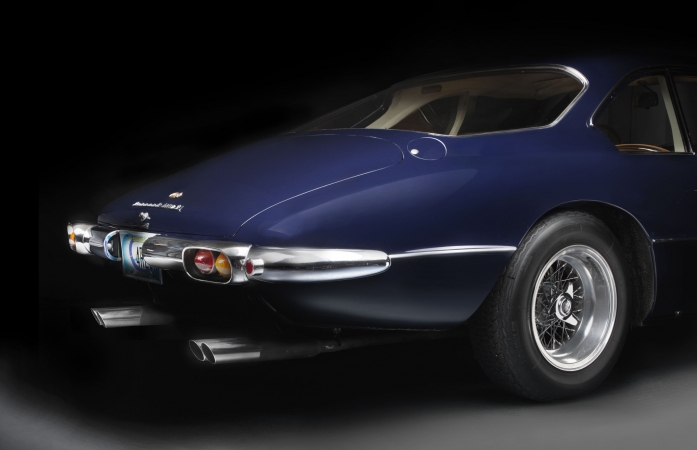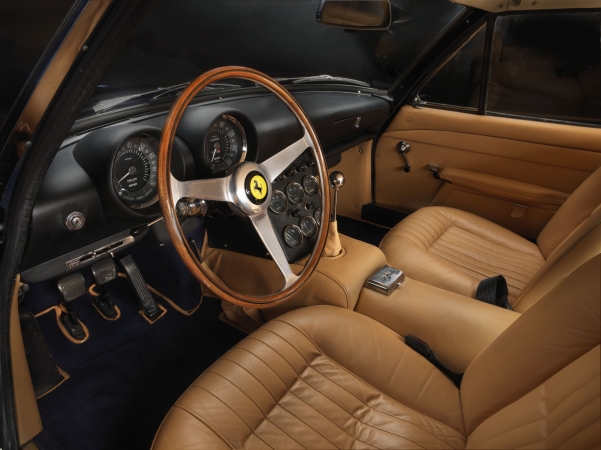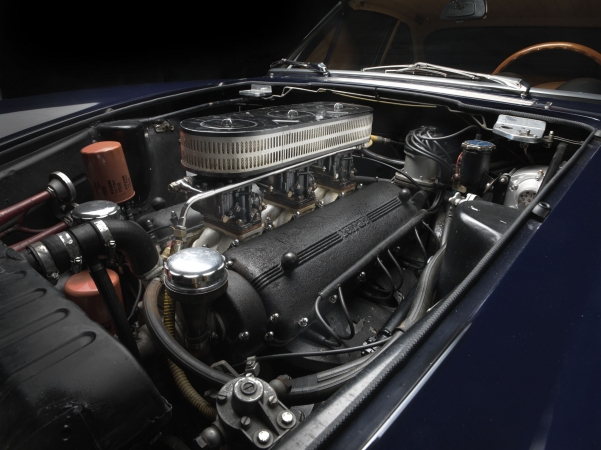Collection of Bernard and Joan Carl, Washington D.C.

1961 Ferrari 400 Superamerica Pininfarina Series II Aerodinamico. Collection of Bernard and Joan Carl. Image © 2016 Peter Harholdt 
1961 Ferrari 400 Superamerica Pininfarina Series II Aerodinamico. Collection of Bernard and Joan Carl. Image © 2016 Peter Harholdt 
1961 Ferrari 400 Superamerica Pininfarina Series II Aerodinamico. Collection of Bernard and Joan Carl. Image © 2016 Peter Harholdt 
1961 Ferrari 400 Superamerica Pininfarina Series II Aerodinamico. Collection of Bernard and Joan Carl. Image © 2016 Peter Harholdt 
1961 Ferrari 400 Superamerica Pininfarina Series II Aerodinamico. Collection of Bernard and Joan Carl. Image © 2016 Peter Harholdt
Sponsored by: LaDonna Y. Boyd
Enzo Ferrari grasped the essence of what wealthy Americans wanted in a luxury car—big cars with big engines—well before any of his European contemporaries. In 1950, Ferrari brought out a 4.1-liter V-12 sports car, unambiguously naming it the Ferrari America.
Making only a very few ultrahigh-performance luxury Gran Turismo (GT) cars each year turned out to be a great way for Ferrari to enhance both its reputation and its profits, and the big-engine America, Superamerica, and Superfast series with varying model numbers, displace¬ments, and power levels were highly successful. But not even a company such as Ferrari is immune to the desire to reduce costs while increasing prices, so it was decided to make some exclusive 400 Superamericas with the cheaper-to-build small-block Colombo engine. So far as customers were concerned, any Ferrari V-12 was more than acceptable when compared to anything else available.
Each 400 SA was at least slightly different in color, trim, accessories, and body details from the others. The tapering rear styling is typical of Pininfarina’s work at the time. In this car, you see traces of Pininfarina’s Alfa Romeo Superflow show car, and of the more commonplace Giulia Duetto roadster. That tendency to reuse and adapt the same styling ideas on multiple cars was quite usual for the great Turin design house.
Ferrari did not manufacture many of these big-engine, big-price-tag cars; a total of forty-seven were built, with this example being the twenty-eighth. Potential owners needed the approval of Il Commendatore—Enzo Ferrari himself—to even be allowed to proffer funds toward a purchase. Each and every one of these cars was made by the supreme design houses, and they were intimately related to Ferrari’s legendary racing cars. All these factors mean that every one of these cars still in existence is now valued at a hundred (or even multiples of a hundred) times above its initial cost, and the examples with special prove¬nance carry yet more value.
—Adapted from the exhibition catalogue essay by Robert Cumberford
